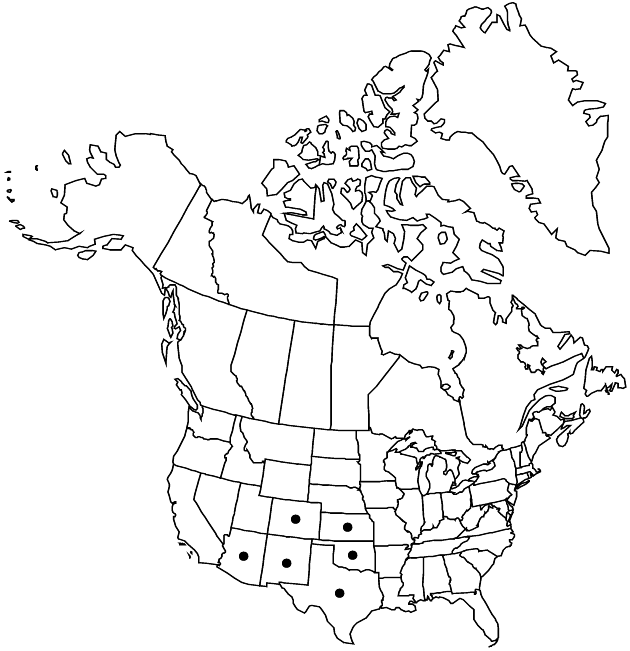Ratibida tagetes
Bull. Torrey Bot. Club 24: 410. 1897.
Perennials, to 55 cm; taprooted. Leaves (proximal sometimes lanceolate, usually pinnately lobed; cauline mostly 1–2-pinnately lobed) 0.5–9 × 0.2–6.7 cm, lobes 2–7, linear to narrowly lanceolate-obovate, 0.5–4 mm wide, faces strigose and gland-dotted. Heads 1–8+, held just beyond leaves. Peduncles 0.3–6.5 cm (± uniformly green, not ribbed). Phyllaries 10–12, outer lanceolate, 1.2–6 × 0.5–2.5 mm, inner lanceolate-ovate, 1.2–4 × 0.3–1.5 mm. Paleae oblong, 2–4 × 1.5–2.5 mm, resin glands linear to oblanceolate, 1–2 mm. Ray florets 5–10; corollas yellow or purplish yellow to purple, laminae linear to elliptic-oblanceolate, 3–10 × 2–6 mm. Discs subspheric to ovoid or ellipsoid, 5–15 × 5–14 mm. Disc florets 50–200+; corolla greenish yellow, sometimes purplish distally, 1.2–2.5 mm; style branches 0.8–1.2 mm, proximal 1/2 stigmatic, apices subulate. Cypselae oblong-oblique, 1.9–2.8 × 1.2–2 mm, adaxial margins usually winged and distally ciliate, apices ciliate; pappi coroniform (of connate scales, 0.2–1.5 mm). 2n = 32.
Phenology: Flowering May–Oct.
Habitat: Prairies, high plains, rocky hillsides
Elevation: 300–2500 m
Distribution

Ariz., Colo., Kans., N.Mex., Okla., Tex., Mexico (Chihuahua).
Discussion
Selected References
None.